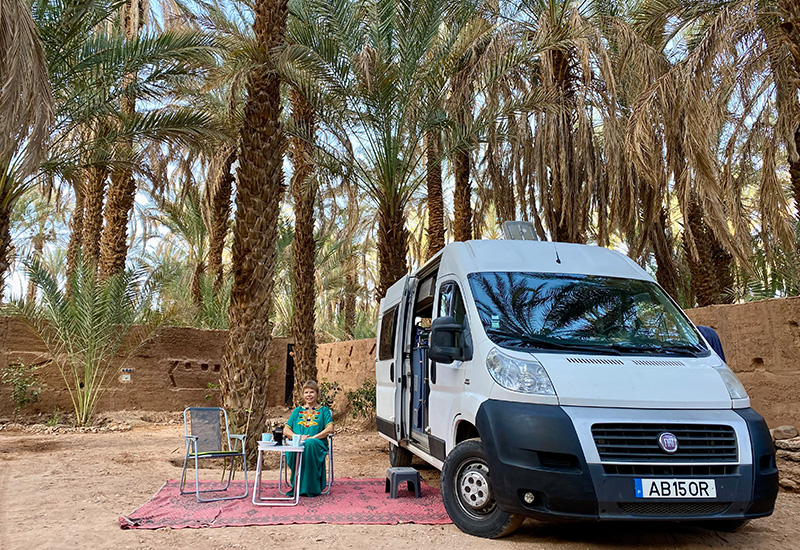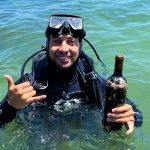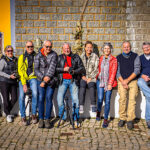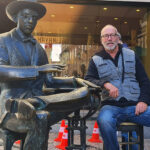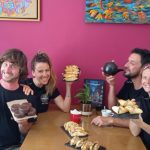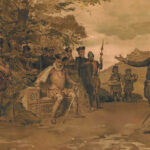We continued our adventure south with Tata as the next destination. The journey was spectacular, with towering reddish mountains and sandy plains that only the hardy Argan trees seem to inhabit. There were scary hairpin bends affording more amazing views. We finally reached the outer plains of the Sahara Desert, close to the Algerian border. Tata oasis is in the centre of three riverbeds and irrigation channels feeding surrounding palm groves. The town has a unique charm, with buildings made of pink clay.
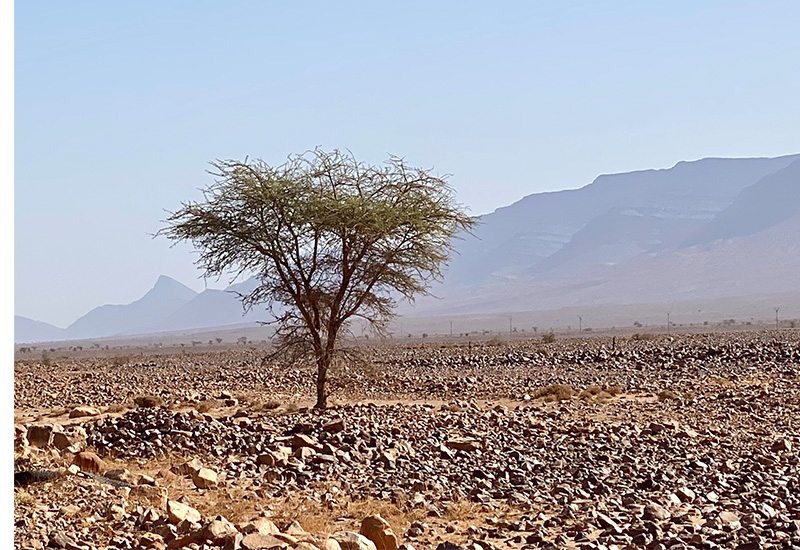
We took an evening stroll into the town and had another tasty tagine meal. Near a school, we spotted large groups of children playing happily. Their mothers were sitting on a curb, watching, and taking the opportunity to socialise. And the men? Sitting in the cafés on the terraces, talking and watching the world go by.
We continued along the Draa valley riverbed heading towards Zagora and the Sahara Desert. The Draa is Morocco’s longest river at 1,100 km flowing from the High Atlas Mountains, meandering to its mouth in the Atlantic Ocean. The valley is home to the largest palm grove in the world with its unique ecosystem. It was lovely to see oases with their verdant plantations punctuating the vast sandy plains.
Even here, the tarmac roads were excellent. The only hazards were camels wandering onto the road, as several signs warned us. Finally, we stopped at Zagora – the gateway to the Sahara Desert. Historically, it was an important stopover for caravans loaded with salt and gold. The legendary sign at the entrance to the town claims that it took 52 days by camel to reach Timbuktu.
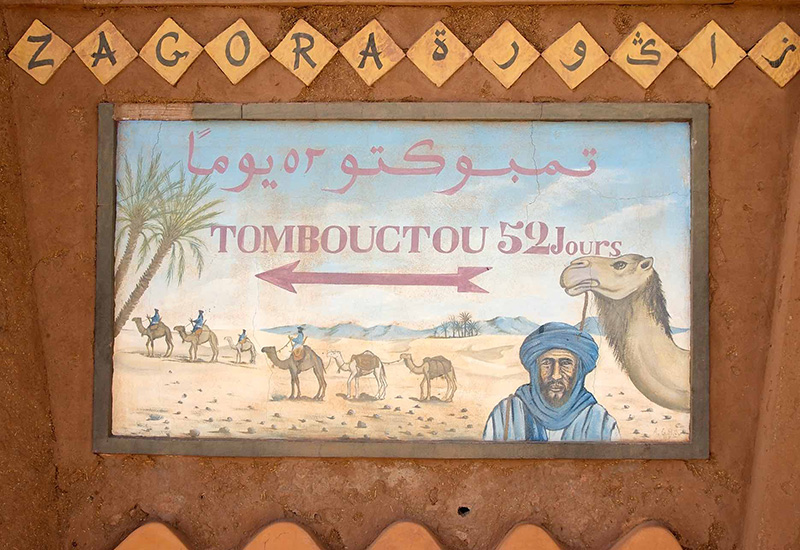
Merzouga was as far into the desert as we would venture in the van. We spent the night at a sand-washed small inn with space for campervans to park. It was situated just at the foot of the imposing Erg Chebbi dunes, the largest in Morocco, spanning 50 km and reaching 350 metres in places.
Organised excursions didn’t appeal but we still wanted to have a taste of the desert on camelback. So, Hassan, the inn’s manager, picked up the phone, and Ali arrived with two camels in tow.
We had a wonderful two-hour trek along the dunes. The bright blue sky contrasted brilliantly with the golden yellow sands. The town of Merzouga was visible far down in the valley beyond. Once or twice the tranquillity was disturbed by jeeps and buggies racing up and down. But the magic remained, especially as the sun set over the dunes.
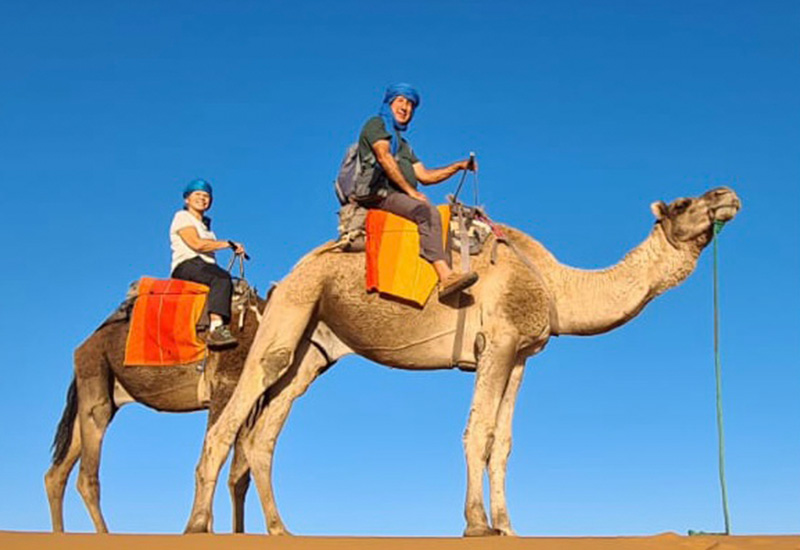
Tinghir, our next destination, is an oasis wedged between two mountain ranges, the High Atlas in the north and Little Atlas in the south, forming the spectacular Todgha Gorge. We stayed at a lovely campsite by a stream flanked by ravines. I would give the on-site restaurant top marks for the trip’s best couscous meal, which included a complimentary Pudim Flan (custard pudding, very popular in Portugal too).
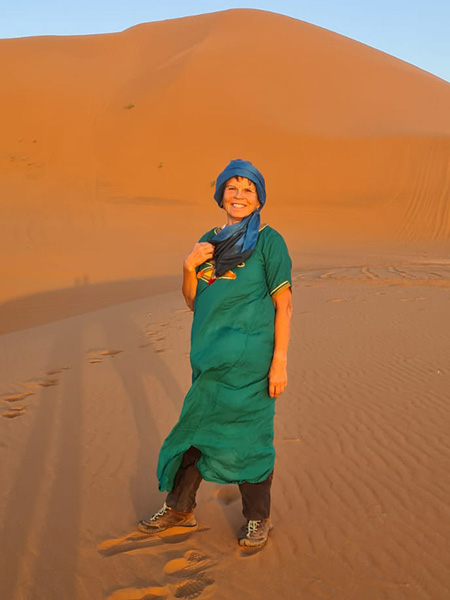
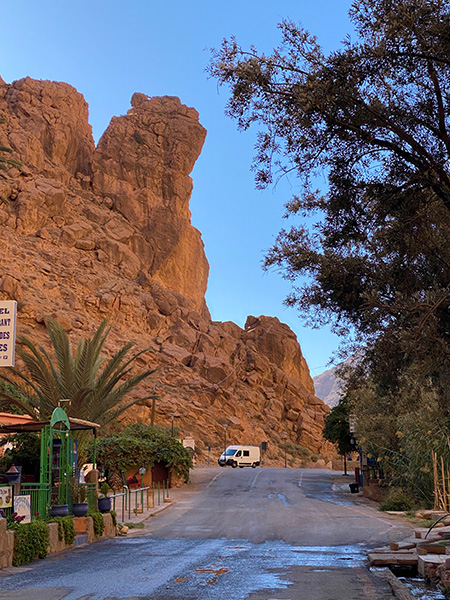
We had no idea what was in store for us the next day. Dades Gorge is well known, so we made a detour to look. It consists of a series of wadi gorges carved out by the Dades River that flows to the edge of the Sahara Desert. It was a dramatic drive along hairpin bends, taking in the astounding rock formations in red and mauve colours, some stripped bare to zigzagging layers of strata. We could see the ancient kasbahs and ksour, fortified Berber villages, overlooking the valleys with their lush groves of palm and almond trees. It was necessary to retrace our steps to the main road, but seeing the panorama from a different angle was interesting.
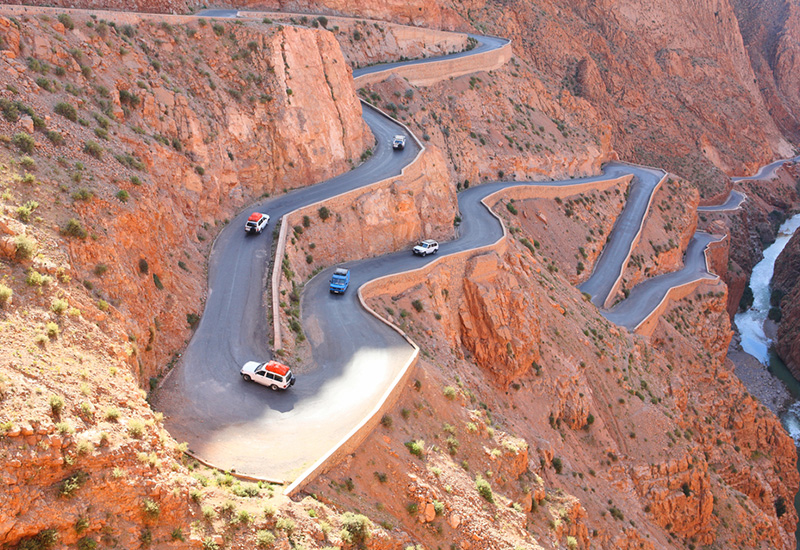
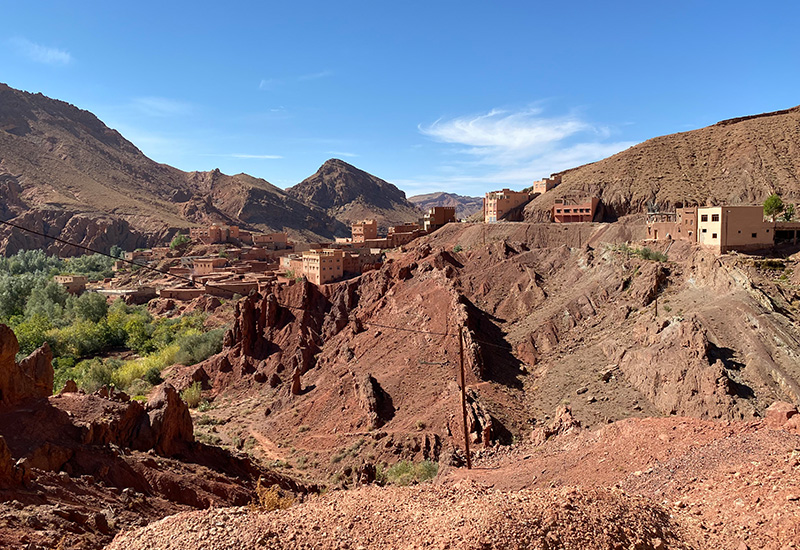
Our next port of call on the way north is bound to be familiar to most – without realising it! Ouarzazate is home to Taourit Kasbah, a 19th-century sprawling palace and was an important staging post for caravans on the Saharan trade routes. It has extensive views over the rugged landscape featured in many films. The Atlas Studios, the world’s largest in acres, is nearby. It is set in a desert landscape surrounded by distant mountains. Endless blue skies and perfect lighting ensured that major films and television series such as Lawrence of Arabia, Cleopatra, Gladiators, Game of Thrones, etc., were filmed here. With his expertise as an assistant cameraman, our guide staged a few scenes with us acting out parts which he duly filmed on his mobile. Impressive. Strangely, no film offers followed.
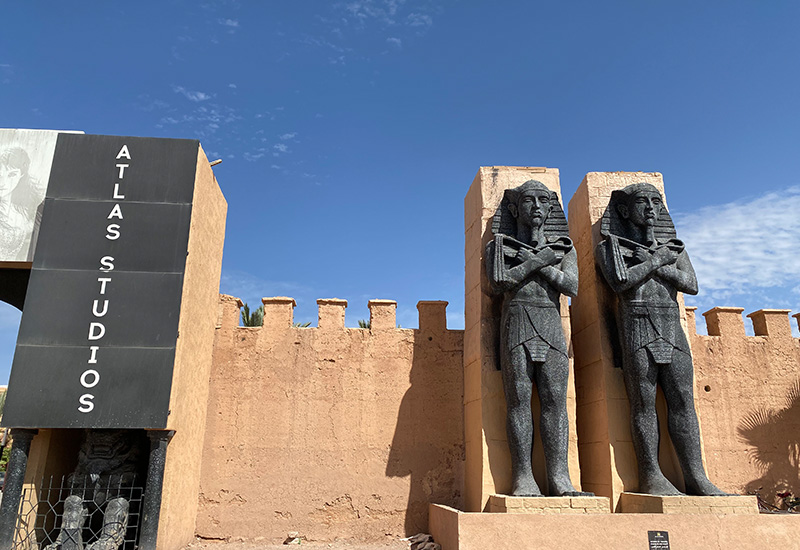
Marrakesh was next on the itinerary. As expected, it was huge, bustling, busy and hot! We spent hours wandering around the boundless medina and visiting some interesting sites. The night-time spectacle of the main square of Djemaa El Fna was exhilarating. Many food stalls enticed visitors to have fresh food sizzling on grills. After having our share at one of the long tables, we took in the drama around us: musicians in gaudy costumes, dance troupes, snake charmers, acrobats and much more. An experience not to be missed.
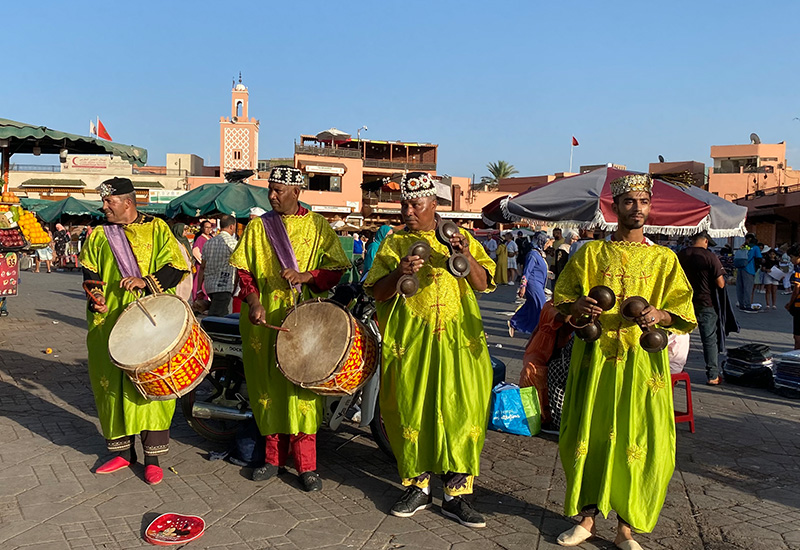
Cascades D’ouzoud was our next stop. Although there was less water at this time of year, the set of waterfalls that empty into a gorge was still beautiful. We learnt that ouzoud means grinding grain in Berber, and we could see many vestiges of mills. You could view the falls at the summit and enter the gorge following a narrow track.
Here we encountered wild Barbary monkeys. They are native to the Atlas Mountains, along with some that have been introduced to Gibraltar. It was a delight to see them, although less the ‘wild’ as tourists spoil them with treats.
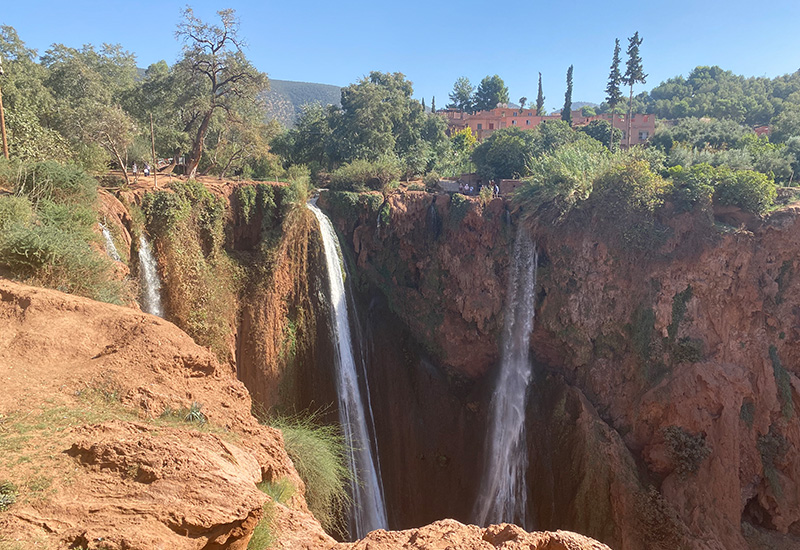
The next day we passed through a honey-producing area with hives along the hillside and stalls selling honey on the roadside. Further, olive groves took centre stage with many presses and olive jars for sale. Then apples. We’d already seen lots of apples for sale in the markets. There were vast areas of covered apple orchards – and sure enough, vendors were plying sackfuls of apples to passersby.
We continued to drive through the ever-changing countryside. Now it was the turn of pomegranates. Lining the road were buckets and wheelbarrows brimming with large red Meknés variety pomegranates and smaller yellow ones.
With a short stop at Meknés, the former imperial city, we continued to Fez. There was a tap on the window as we were queuing in the traffic on the way to a campsite I’d located on the internet. An elderly, rather toothless man on a moped explained in passable Spanish that the campsite was closed. How did he know we were headed there, we wondered? He persuaded us to follow him on his moped to another nearby. We took his word for it, turned around at the next island and pursued him. We noted that the word PORTUGAL was written in big letters on the back of his tee shirt. However, he was right. The campsite he took us to was excellent.
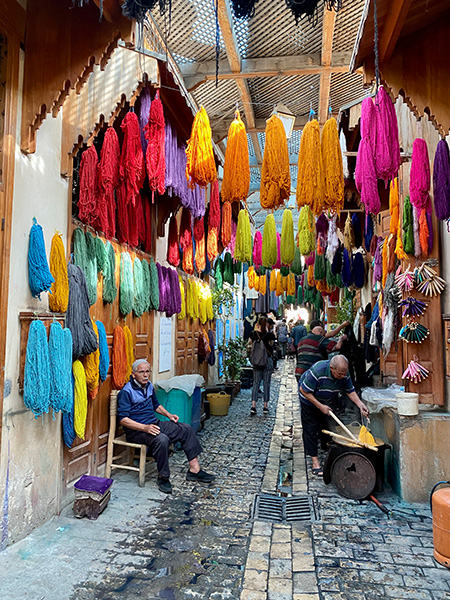
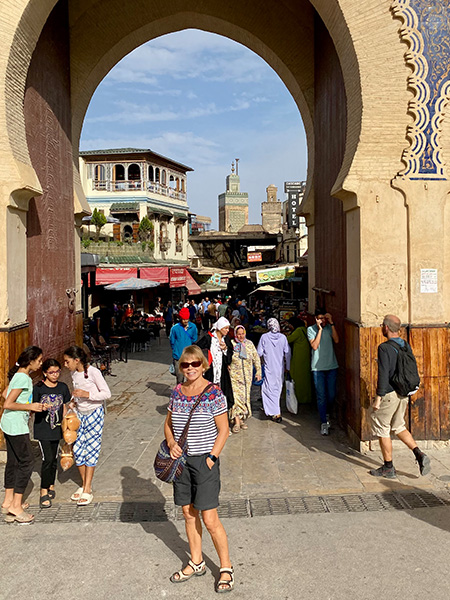
Fez Medina was an enchanting experience. The ancient medina is a labyrinth of over 10,000 alleyways with artisanal shops selling all kinds of handmade goods. It’s Morocco’s best-preserved old city, with buildings from the 13th and 14th centuries. It was pleasantly cool as much of the walkways were covered with high ceilings, letting the air circulate.
We navigated the maze of alleyways, past mosques, madrassas, the beautifully tiled 9th-century university, plazas with fountains, workshops of wool dying and metal bashing and, of course, the tanneries. The Chouara Tannery, believed to be the oldest in the world, has been featured in so many films that we were eager to see it for ourselves. On top of the building, we could see the vast expanse of stone vats filled with white liquid and dyes of different kinds. We did need the branches of mint we were offered to mitigate the overwhelming smells!
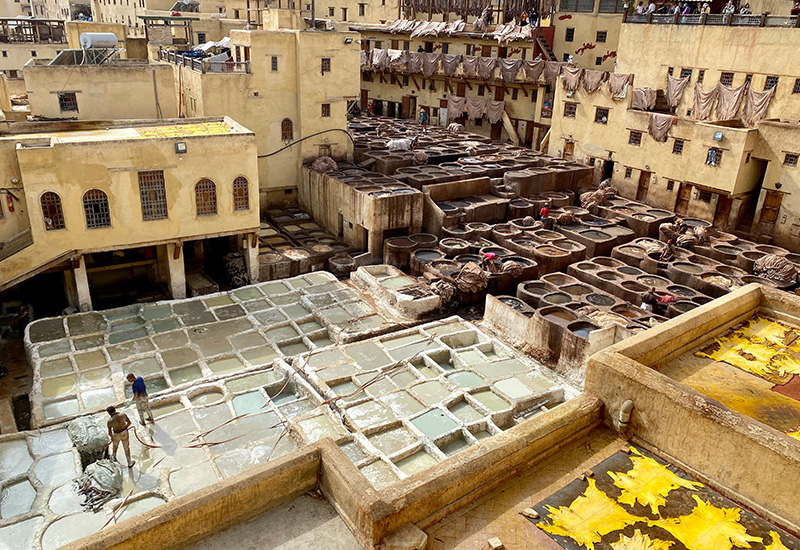
Nearing the end of our journey, we stopped at Chefchaouen by the Rif Mountains. What a gem it was. It was originally built as a fortress in the 15th century. After the Reconquista and fall of Granada, its population grew with the influx of Muslim and Jewish immigrants fleeing Spain. But why is the town painted blue? There are theories that it was Jews fleeing Hitler and settling in the town who painted the house electric blue to represent the sky. Whether it is true or not, the effect is marvellous.
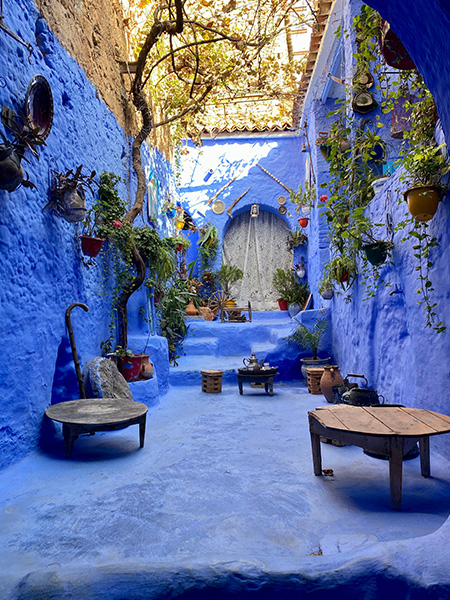
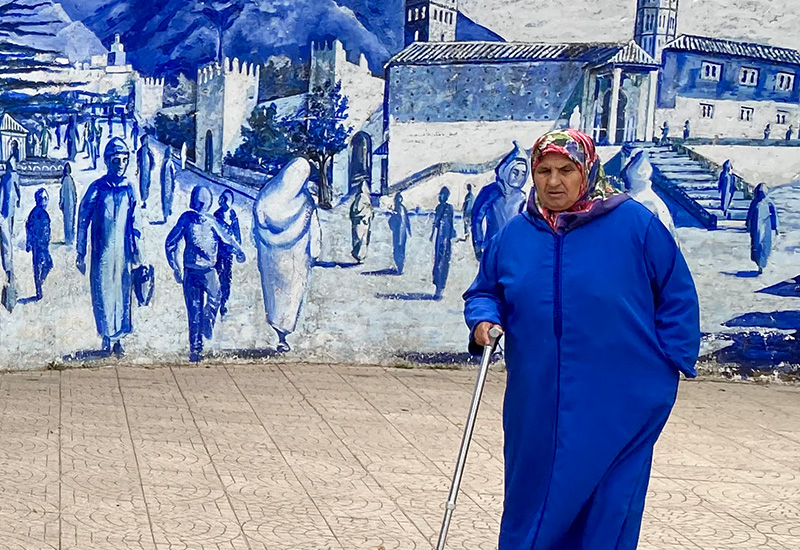
We completed our circular route in Tangier. This time, we were able to explore the city at leisure, soaking up the sights and smells of the souks and enjoying the extensive views out to sea.
Our journey had come to an end. I couldn’t help but use superlatives when describing our experiences. The scenery, friendliness, and hospitality of the people we met were terrific. Coming from Portugal proved popular. The response was always the same. Huge beaming smile, followed by: “Ronaldo!” or “sardinhas lindas” (pretty sardines) or when browsing in a shop: “Se queres, queres” (If you want, you buy).
We had no mishaps during the three weeks and even the spare wheel was unused.
Truly bitten by the Moroccan bug, we plan a return journey in late spring. I’m already brushing up on my French and want to have a few handy phrases in Arabic ready for our next encounters.
There are many ways of visiting Morocco. Apart from taking your campervan, there are other options, from organised tours, beach holidays, safaris, to staying in desert camps. Different festivals are held throughout the years that attract visitors. Morocco is on our doorstep but it opens up a whole new world.
